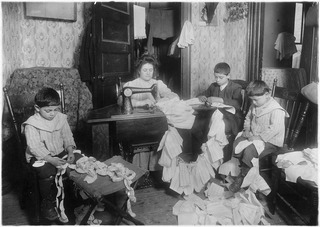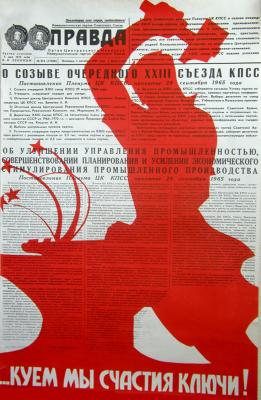
A wage is payment made by an employer to an employee for work done in a specific period of time. Some examples of wage payments include compensatory payments such as minimum wage, prevailing wage, and yearly bonuses, and remunerative payments such as prizes and tip payouts. Wages are part of the expenses that are involved in running a business. It is an obligation to the employee regardless of the profitability of the company.
In the mid-1980s, Communist Czechoslovakia was prosperous by the standards of the Eastern Bloc, and did well in comparison to many richer western countries. Consumption of some goods like meat, eggs and bread products was even higher than the average countries in Western Europe, and the population enjoyed high macroeconomic stability and low social friction. Inhabitants of Czechoslovakia enjoyed a standard of living generally higher than that found in most other East European countries. Heavily dependent on foreign trade, the country nevertheless had one of the Eastern Bloc's smallest international debts to non-socialist countries.

Juan José de Amézaga Landaroso was a Uruguayan political figure.

A salary is a form of periodic payment from an employer to an employee, which may be specified in an employment contract. It is contrasted with piece wages, where each job, hour or other unit is paid separately, rather than on a periodic basis. Salary can also be considered as the cost of hiring and keeping human resources for corporate operations, and is hence referred to as personnel expense or salary expense. In accounting, salaries are recorded in payroll accounts.

The National Minimum Wage Act 1998 creates a minimum wage across the United Kingdom. From 1 April 2023, the minimum wage is £10.42 for people aged 23 and over, £10.18 for 21- to 22-year-olds, £7.49 for 18- to 20-year-olds, and £5.28 for people under 18 and apprentices.
The economy of the Socialist Federal Republic of Yugoslavia (SFRY) was a unique system of socialist self-management that operated from the end of World War II until the country's dissolution in the 1990s. The Yugoslav economy was characterized by a combination of market mechanisms and state planning, with a focus on worker self-management and a decentralized approach to decision-making. Despite facing numerous challenges, including political instability and external pressures, the Yugoslav economy achieved significant growth and modernization during its existence, with a particularly strong emphasis on education, health care, and social welfare. However, the system ultimately proved unsustainable in the face of the global economic changes of the 1980s and the political tensions that led to the breakup of Yugoslavia in the 1990s. Despite common origins, the Yugoslav economy was significantly different from the economies of the Soviet Union and other Eastern European socialist states, especially after the Yugoslav-Soviet break-up in 1948. The occupation and liberation struggle in World War II left Yugoslavia's infrastructure devastated. Even the most developed parts of the country were largely rural, and the little industry of the country was largely damaged or destroyed.

Wage labour, usually referred to as paid work, paid employment, or paid labour, refers to the socioeconomic relationship between a worker and an employer in which the worker sells their labour power under a formal or informal employment contract. These transactions usually occur in a labour market where wages or salaries are market-determined.

Piece work or piecework is any type of employment in which a worker is paid a fixed piece rate for each unit produced or action performed, regardless of time.
Wage Payment Systems are the different methods adopted by organizations by which they remunerate labour. There exist several systems of employee wage payment and incentives, which can be classified under the following names.

The 1965 Soviet economic reform, sometimes called the Kosygin reform or Liberman reform, was a set of planned changes in the economy of the USSR. A centerpiece of these changes was the introduction of profitability and sales as the two key indicators of enterprise success. Some of an enterprise's profits would go to three funds, used to reward workers and expand operations; most would go to the central budget.

As the economy of China has rapidly developed, issues of labor relations have evolved. Prior to this reform, Chinese citizens were only allowed to work where they originated from. Since 1978, when China began labor force reforms, the overwhelming majority of the labor force were either working at State owned enterprises or as farm workers in the rural countryside. However, over time China began to reform and by the late 90's many had moved from the countryside into the cities in hopes of higher paying jobs and more opportunities. The only connection between the countryside and the city soon became that there was a huge floating population connecting them. Independent unions are illegal in China with only the All-China Federation of Trade Unions (ACTFU) permitted to operate. China has been the largest exporter of goods in the world since 2009. Not only that, in 2013 China became the largest trading nation in the world. As China moved away from their planned economy and more towards a market economy the government has brought on many reforms. The aim of this shift in economies was to match the international standards set by the World Trade Organization and other economic entities. The ACTFU that was established to protect the interests of national and local trade unions failed to represent the workers, but instead failed to do so leading to the 2010 crackdowns. However, these strikes were centered around foreign companies.

Munitionettes were British women employed in munitions factories during the time of the First World War.

A thirteenth salary, or end-of-year bonus, is an extra payment sometimes given to employees at the end of December. Although the amount of the payment depends on several factors, it usually matches an employee's monthly salary and can be paid in one or more installments. The thirteenth salary is most prominent in Latin America, where this payment is mandatory in most countries. In countries where the bonus is required by law, all employees usually receive it if they have worked for the company for a certain required amount of time. However, freelancers and contract workers are often not entitled to the 13th-month pay. Employees who have not worked for the company for a year often receive a prorated amount.

The Soviet working class was, according to Marxist–Leninist theory, supposed to be the Soviet Union's ruling class during its transition from the socialist stage of development to full communism. However, according to Andy Blunden, its influence over production and policies diminished as the Soviet Union's existence progressed.

The Minimum Wages Act 1948 is an Act of Parliament concerning Indian labour law that sets the minimum wages that must be paid to skilled and unskilled labours.
The labour movement or labor movement consists of two main wings: the trade union movement or labor union movement on the one hand, and the political labour movement on the other.
After the Chinese Communist Party (CCP) extended its ruling to most parts of China and set up a national government in Beijing in 1949, it encountered a lot of new tasks. The first was to rebuild the economy, which deteriorated sharply during the last years of Nationalist Party (KMT) governing. The strategy that led CCP to state power is termed as "using the rural areas to encircle the cities" (农村包围城市). Thus, one difficulty CCP had in economy was that it had little experience in dealing with the urban part of the economy. Furthermore, facing the threat of KMT's fighting back, it needed to consolidate its political power. To meet these challenges, a new and coherent wage system in the economic sector was needed. Naturally, this transformation of wage system had both political goals and economic goals. Economically, via setting up a new wage system, CCP wanted to stabilize the economic situation, to ensure normal people's everyday living and also to further develop the economy. Politically, CCP not only wanted to distinguish itself from the old KMT regime by this new wage system, but also to make the wage system suitable for the future socialist economy. After two wage reforms in 1952 and 1956, a new wage system was established, and its influence continued to today.

The National Federation of Women Workers (NFWW) was a trade union in the United Kingdom of Great Britain and Ireland active in the first part of the 20th century. Instrumental in winning women workers the right to a minimum wage for the first time, the NFWW broke down barriers for women's membership in trade unions in general.
The Bangladesh Garment Workers Trade Union Centre (GWTUC) is a trade union federation of garment workers in Bangladesh. It is one of the largest trade unions in that sector, with more than 20 factory trade unions affiliated to it. It has enough members to be formally recognised as a trade union, but does not have that status, as is not uncommon for left-oriented unions in Bangladesh. Politically, GWTUC is aligned with the Communist Party of Bangladesh.
The National Garment Workers Federation (NGWF) is a registered national trade union federation of garment workers in Bangladesh. With 87 registered factory unions, it ifs considered one of the four main federations of garment workers' unions. NGWF is the initiator and a member of the Bangladesh Garments Workers Unity Council and a member of the Bangladesh Center for Workers' Solidarity. It is affiliated with the IndustriALL Global Union and one of the signatories of the Bangladesh Accord.














